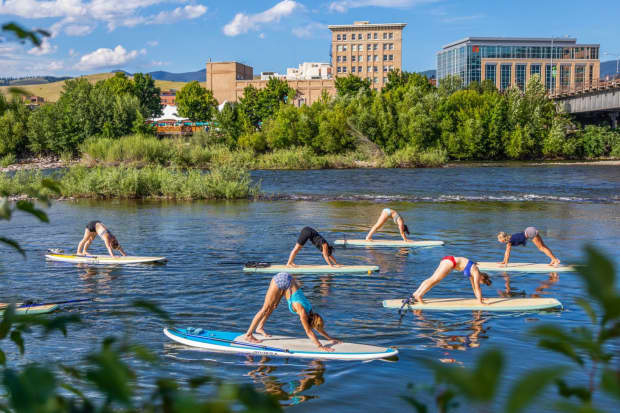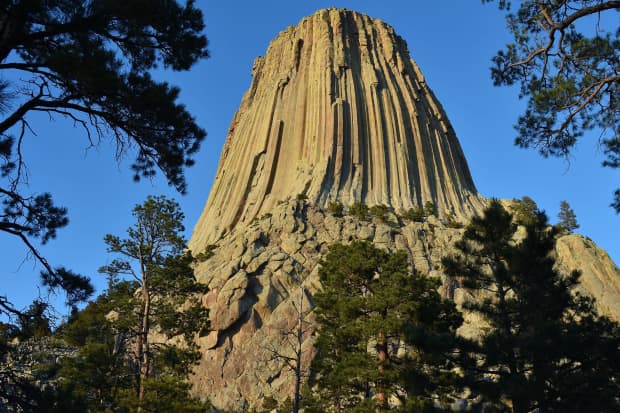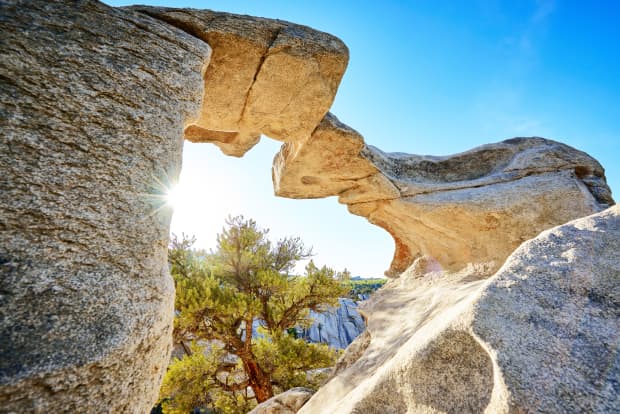This post was originally published on this site
Dear MarketWatch,
I’ve worked in the luxury resort business all my life…mostly in Hawaii (big golf/beach resorts) and Colorado (high mountain ski resorts). So I’ve always lived in great places, but also very expensive places. I’ve been able to do well financially and live well, but it is also dependent on my job and being in the hotel business, working 50 to 60 hours a week.
I am 53 years old and have about $1.4 million in 401(k) and Roth accounts plus about $900,000 in other assets. I live and play outdoors a lot, and want to live in the West. My wife is an avid rock climber, so she needs to be around that sport.
I would like to relocate in the next two to five years to a place where housing costs are reasonable, and we can have land and space to roam. I want to be in recreation country, but not necessarily work in the resort business. I could take a “regular job” to stay active and most importantly keep up with health insurance. I would plan to work for at least another 10 years, maybe longer.
My thought is to put a lot of money down on a house, so the mortgage isn’t what I have to work for, and play in the mountains. I hunt/fish/hike and generally like rural areas and small towns as long as I can support myself. I used to think getting to a college town was the way to go, as a campus has a lot of jobs, and the college supports a lot of medical and local businesses as well as having good activities. But now I’m wondering if COVID-19 will change that concept forever.
I was thinking Wyoming, Idaho, Montana and the Dakotas, as they are cheaper than Colorado and Utah. But I want to find an “up and coming” place, and not a “dead and dying” old town. So what are your thoughts?
John
Dear John,
Colorado and Utah may seem expensive but don’t kid yourself about Idaho. Housing prices there have been climbing, in part because of COVID-19 — see Sandpoint, for example, suggested here. And in Montana, Bozeman? Whoa!
Finding affordable housing and a job with benefits in recreation country can be tough, and COVID has made housing in many previously affordable areas more expensive. So please be realistic about the job market, or the hours you might be working for far less pay than your current job, or whether you might be standing on your feet for the entire shift, or whether the work will be only seasonal and you’re still on the hook for health insurance.
Perhaps you can parlay your decades in the hospitality industry into a job tied to a university and its hospitality management program — but will that be a position with health insurance and a 401(k) plan? If that’s what you want to do, start networking.
Or have you considered talking to your current employer about options with fewer hours?
Beyond work, you say nothing about the cost of the lifestyle you lead now or want to lead in retirement. So double check whether your sizable nest egg can easily fund it or you need to keep stashing away cash. There are no guarantees in financial planning, so please build in a margin of safety.
Read: This is how you can withdraw from your 401(k) at 55 — without paying a penalty
But if you could go anywhere? I asked MarketWatch’s “where should I retire” tool for fast-growing areas in the Mountain region with a below-average cost of living and a college town (MarketWatch only includes universities with big research programs, so not even all flagship state universities come up). I added the outdoor options and sought smaller metropolitan areas (under 100,000 people) if possible.
You have plenty of options, though as always, there are trade-offs. The results show government-defined metropolitan and micropolitan statistical areas, not a particular city. Keep that in mind when you note median home prices. You can search online for median home prices in a particular town; you’ll find quite a range in the Salt Lake City area, for example.
So don’t rule out Colorado and Utah; Colorado Springs (suggested here), Logan, Utah (suggested here), Ogden, Utah (suggested here), and St. George, Utah (suggested here), may be more affordable than you think. You can treat them as jumping-off points for something more rural.
Here are three more suggestions to get you started in the states you asked about.
Missoula, Montana

Taylar Robbins for Destination Missoula.
This city in western Montana, nestled in the northern Rockies, has close to 77,000 people, making it the second-largest city in the state after Billings. It’s also home to the University of Montana. I’m thinking its size gives you a wider range of job opportunities — or is it too big, even if you choose to live outside city limits?
You can kayak through downtown on the Clark Fork River (and the man-made kayaking wave) and explore nearby ghost towns in addition to the rock climbing, hiking, fishing and horseback riding you expect to find out west. Oh, and the Bitterroot National Forest, Lolo National Forest, Lee Metcalf Wildlife Refuge and the National Bison Range are all nearby.
What a playground!
With all that public land available, do you need your own “land and space to roam”? Or is that a way to trim the budget?
The downside is that median home prices, whether in Missoula or elsewhere in Missoula County, aren’t cheap, though they are far lower than in Bozeman and cheaper than in Boise. Here’s what the housing market looks like, using listings from Realtor.com (which, like MarketWatch, is owned by News Corp.)
If Missoula isn’t for you but Montana appeals, consider Kalispell, near the entrance to Glacier National Park and home to nearly 26,000 people.
Gillette, Wyoming

Devils Tower National Monument is an hour from Gillette, Wyo.
AFP via Getty Images
In looking for an affordable town next to some great rock climbing sites, I shied away from Lander, Wyo., despite it being rated a great outdoors town, because its population has barely budged over the better part of a decade.
Gillette, in eastern Wyoming, scores better because Devil’s Tower National Monument, an hour away, makes this list of great climbs, and it has added several thousand residents since 2010. A caveat: That’s still a slower growth rate than the national average, so you need to decide whether the city is up-and-coming enough for you.
With almost 33,000 people, Gillette is nearly three times bigger than Spearfish, S.D., also an hour from Devil’s Tower. Rapid City, S.D., would be the “big city” — closer in size to Missoula and with more tourism industry jobs because of Mount Rushmore — but in that case Devil’s Tower is about 1 hour and 45 minutes away. That’s a trade-off you and your wife would have to weigh.
When it comes to your outdoor fun in Wyoming, Keyhole Reservoir, on the way to Devil’s Tower, is a fishing possibility. The hunting here includes antelope and pronghorn as well as whitetail and mule deer.
Housing is far cheaper in Gillette (and even in Rapid City) than in Missoula. But you won’t get a college town. And given that the biggest employers in Gillette are energy firms, you may have to accept the economic swings that come with that.
Here’s what’s on the market now, again using listings from Realtor.com.
Idaho Falls, Idaho

The City of Rocks Natural Reserve
Courtesy Idaho Tourism
This is an alternative to Pocatello, a city flagged by the “where should I retire” tool and which I’ve suggested here.
Pocatello has the main Idaho State University campus, but Idaho Falls, an hour away and slightly larger with 63,000 people, might be a better fit because it is growing faster (and also faster than Gillette). The Milken Institute ranked Idaho Falls area as the best-performing small city in 2021, citing significant short-term job growth and performed well on five-year growth indicators as well; Pocatello is 59th.
One of the big employers is Idaho National Laboratory, a government site that does nuclear energy research and development. There’s also an outpost of the University of Idaho here.
Idaho Falls is closer to Yellowstone National Park and the Tetons than Pocatello, and you can start your fishing on the Snake River in town.
Split the difference to have a more rural lifestyle and the advantages of the job markets in both Idaho Falls and Pocatello, and you are in Blackfoot, population 12,000.
Massacre Rocks State Park, south of American Falls, is a rock-climbing possibility. More options are Castle Rocks State Park and City of Rocks National Reserve, more than two hours from Idaho Falls. Craters of the Moon National Monument & Preserve is about 100 miles away.
This may be your cheapest housing market of the three. Here’s what your money gets you in Idaho Falls.
Readers, where should John and his wife (semi-)retire? Leave your suggestions in the comments section.

